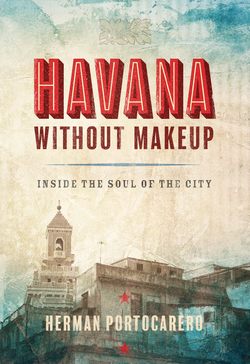Читать книгу Havana without Makeup - Herman Portocarero - Страница 26
На сайте Литреса книга снята с продажи.
Оглавление19.LOOKING WEST – TO ASIA AGAIN
During the economic crisis of the 1990s, coinciding with the economic reforms in China, Fidel himself investigated the Chinese model. But given differences in scale, the proximity of the United States, and a very different labor situation, the conclusion was that it was not applicable in Cuba. It’s not on record what Fidel thought about the side effects of accelerated industrialization in China, but he must have had an eye for the social consequences of cheap labor on a near cosmic scale. So there was to be no imitation of the Chinese model.
But what did happen was a resumption of trans-Pacific patterns. The new pacotilla china (Chinese merchandise rather seen as tacky “bling”) which started flooding Cuba in the 2000s, included cheap consumer products for the new middle class that was emerging thanks in part to Miami remittances and family visits.
China was doing in Cuba what it did elsewhere in the region: getting a foot in the door and eyeing a future when Cuba would be the ideal springboard to reach the United States, with a widened Panama Canal around the corner. Significantly, the expanded port of Mariel would be managed by a company from Singapore. But Chinese suggestions, even between the Communist Parties on both sides, to allow for faster privatization or to open an internal capital market, fell mostly on deaf Cuban ears.
Looking for a more suitable Asian model, Cuba turned to Vietnam, a country with which it had had friendly relations going back to the Vietnam War. Many schools and other public institutions in Havana still bear heroic names from the war years. There is a large monument to Ho Chi Min in a park in Nuevo Vedado, and the Vietnamese General Giap, who beat the French at Dien Bien Phu, was always seen as a model for the Cuban armed forces.
Vietnam was thus an attractive example, but again, copying it was not possible. Cuba is an 80 percent urban society and Vietnam is rural in the same proportion. The work ethic is different and the acknowledged side effects of fast economic growth in Vietnam also frightened the Cuban establishment.
But could the Cuban economy achieve a blend like the one of the much loved mulata china to find its own best formula? It had worked for the mingling of the blood, but how could such a mixture of forces create prosperity and run the country?
That Cuba has just as much entrepreneurial spirit as China could easily be illustrated by the success of the Miami diaspora, and in Havana itself by the fast rise of trendy restaurants and bars when private initiative in selected sectors became further liberalized as of 2012.
But there are still huge differences with China.
The size of the economy, to begin with. The complications of the lingering U.S. embargo interfering with easy access to supplies and equipment and impeding access to the most natural nearby market. Access to credit. The rudimentary internal financial networks. A still rather restricted, or at any rate overregulated, environment for foreign investment. And, as a colleague of mine bluntly puts it, Cuba lacks a few thousand years of Confucianism.
So far, therefore, there has been no groundswell of private initiative or a massive move toward profitable manufacturing. Cuba’s labor might be cheap – a fact that may become cynically exploited – but it is also over-qualified and mis-qualified. Few people are willing to till the land, and my guess is that even fewer are willing or would opt to participate in, and survive, industrial labor under hugely competitive circumstances. Entering the textile, sporting goods, and cosmetics industries as a late-comer, how can the country offer employment that is both remunerative and dignified? Should Cuba skip the industrial development phase, and enter the high-tech sectors immediately? Should it concentrate on biotech and pharmaceuticals and become a hub for immaterial trade and services? It’s an attractive proposition. The geographical location and the brains are there, but how feasible will it be unless the old guard lets go of its controls and its illusions?
Cuba does not lack entrepreneurial spirit, but for the large majority of people coming from half a century of heroic slogans and quiet survival, it will be a very rude wake up call to discover what industrial capitalism is really like. Even in a mostly welcoming environment like Miami, waves of Cuban immigrants from the 1990s to the present have had difficulty adjusting to the competitive labor market, the eight-hour day, and the expected levels of productivity.
Already now in Havana, old-guard citizens stuck in the ideas of fifty years ago, clinging to the pride of their cubanía but with holes in their shoes, have to coexist with super-wired young hipsters and with a well-fed new middle-aged bourgeoisie flaunting their cars and their gold. How would I feel to be one of these elders standing on a grimy corner in Centro Habana, waiting for a squeaky bicitaxi to take me home, while the newly rich speed by in Miami-financed SUVs with extra chrome? In China, the newfound belief in upward mobility has so far made possible the coexistence of rich entrepreneurs and a poor workforce. But in Cuba, a generalized social intimacy developed over fifty years in an infinitely smaller territory makes that coexistence far more problematic.
But keep despair at bay. If anything is alive and kicking here, it’s an enormous capacity for survival.
